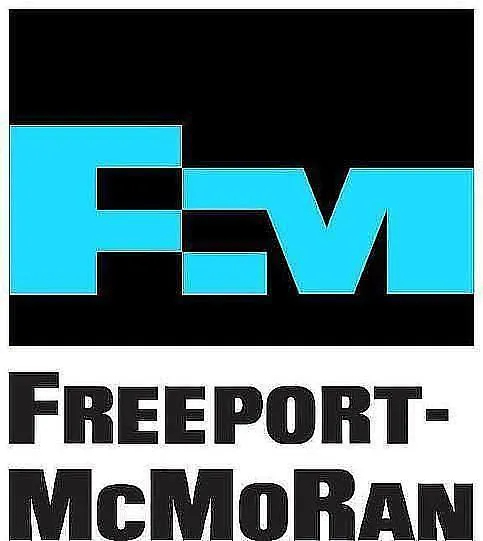(August 31, 2022) Prioritizing the things that drive safe production and not getting distracted by those that don’t is the key to overcoming challenging “headwinds” the company is facing from bad weather, a sluggish economy and a volatile copper price, said Josh Olmsted at a recent virtual town hall with employees.
Workers at all sites in the Americas have shown remarkable resilience by staying focused on keeping production high while being diligent about worker safety, and not getting distracted by things they cannot control, said Olmsted, President and Chief Operating Officer-Americas.
Olmsted was joined at the Aug. 17 session by Steve Higgins, Senior Vice President and Chief Administrative Officer, who said he remains optimistic about the long-term demand for copper despite recent price instability.
Also participating in the town hall was Cory Stevens, President-FM Mining Services, who described the company’s ongoing Leach to the Last Drop initiative that uses data analytics and innovative leaching techniques to squeeze the maximum amount of copper from existing stockpiles while reducing cost and making a positive impact on the company’s carbon footprint.
More than 2,200 employees watched the town hall, which can be viewed here.
Overcoming production challenges
There have been plenty of obstacles to overcome in the past few months, Olmsted said. In the Southwestern United States, torrential monsoon rains and labor shortages have disrupted operations. In other sites like Cerro Verde, there are maintenance issues that they are working through.
Even more concerning was a spike in safety-related incidents – both major and minor – last quarter.
Adding to those distractions has been a volatile copper market in which the price has gone from almost $5 per pound in the spring to little more than $3 by summer to more than $3.70 today.
“That creates uncertainty,” Olmsted said in describing the headwinds he worries about. “It creates an environment in which people start to worry more about the copper price than what they’re doing in the day to day or in executing on our plans. And so, from a headwind perspective, I think that’s probably the thing that I’m most concerned about… But the best way to position ourselves to withstand the volatility in the world is really staying focused on those things which will position us well to withstand that volatility as we go forward.”
Company employees have done that, he said. In the second quarter of the year, the company exceeded its production forecasts by 12 million pounds. While production is down from forecasts so far in the third quarter, it’s understandable given the difficulties related to weather, staffing, maintenance and other operational challenges, he said.
Most important, safety incidents that peaked in April have showed a significant decline since. Olmsted said safety is the most important aspect of everyone’s job, and he accepts a slowdown in production if it is required to avoid unnecessary risk.
“No (safety) event is acceptable no matter how minor it is,” Olmsted said. “We can make up lost production, lost pounds. We can’t make up injuries.”
‘Extraordinarily good’ future for copper
Higgins said employees could be distracted by the fluctuating price of copper. That has happened in part because copper is seen as a proxy for global economic activity, and the world is in the midst of an economic slowdown in the near term, he said.
However, all signs point to a strong demand for copper in the future. Recent studies show that demand for copper will double by 2035 because of global carbon-reduction goals, which will require copper-intensive products like electric vehicles and enhanced power grids.
There is little excess inventory on global exchanges, so when the economy does pick up again there are likely to be supply shortages, he said. And new federal legislation creates incentives for electric vehicles and renewable energy, all of which will add to the demand for copper.
“We continue to have the same view as we did before that the medium- and longer-term view of copper is extraordinarily good,” Higgins said. “The best way that we can impact things is finding ways to make safe production.”
That production is supported by the Leach to the Last Drop effort Stevens spoke about. Freeport’s older leach heaps collectively contain about 38 billion pounds of unharvested copper. Put another way, recovering that copper effectively provides the company with another mine of resources.
“When you look at our leach stockpiles we’re only recovering about 50 percent of the copper that’s been placed out there over the decades,” Stevens said. “If we can get extra pounds, it looks like those pounds are going to be significantly less than $1 a pound. They’ve already been mined, so they come at an 80 percent discount on our carbon footprint, and leaching in general is half as water-intensive as milling.
“There’s a pretty good value proposition.”
Resources available to support employees
Staying focused on Leach to the Last Drop and another critical work does not mean the worries of the world disappear, and so it’s important that employees know the company has resources available to help deal with the mental and familial issues that might arise in stressful times, Higgins said. Company-provided employee assistance benefits allow free counseling sessions for employees and their family members. There also are a number of referral services for family and financial counseling.
It also is important that everyone at the company looks out for each other by being “sensitive and supportive” of those who are struggling with mental health challenges, Higgins said.
“We want to do everything we can do to help support that mental wellbeing,” Higgins said. “If you see people who are struggling, let’s make sure that we find a way to bring our resources to bear to help individuals. Look around you to your co-workers and do what we can do to help people in that regard.”
